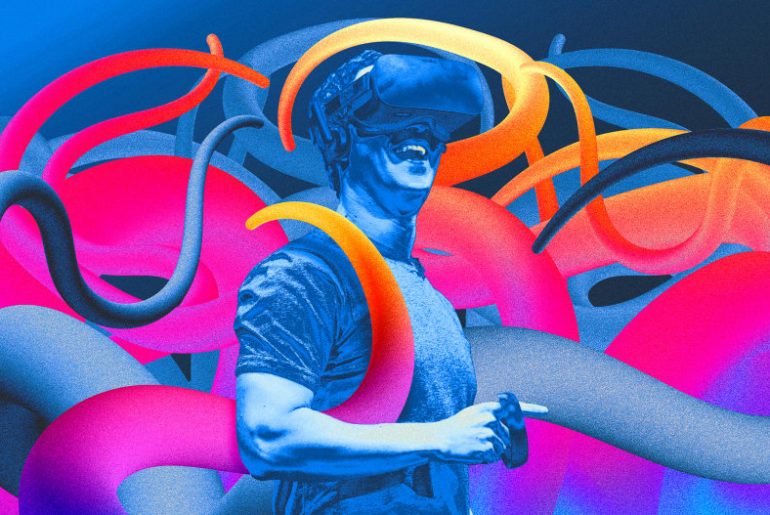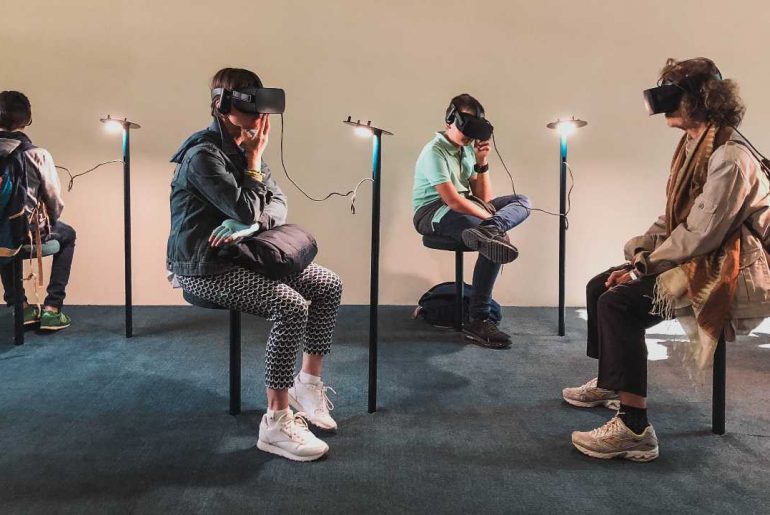Can you tell us about your background and your role at HP?
I started my career in agencies around programmatic media. I thought it was cool. But then, I started to see the in-housing trend pick up in digital advertising. And I went to Deloitte, and then I actually went back to an agency, which is kind of ironic.
I was at this agency [and the man who’s now my boss] called me up and said, ‘Hey, should we in-house?’ And being a bit of a cocky guy, I said, ‘Yeah, only if you employ me to do it.’ And so he did. I came in and built that up in-house practice, basically. Now I look after the in-house media team globally. We’ve got 120 people in-house at HP running media — all over the world, from China to the US to Europe to basically any country you can think of. We’re in 70 countries.
What has building out that in-house agency looked like? What challenges did you face along the way?
We built it based on six different criteria. We put a strategy together to say, ‘Look, we want to basically want to control our own data. We want transparency in the media we’re buying. We want to have the ability to — this sounds really ironic now — be closely connected with our team members in the office together. [The point is] everyone was the same. It wasn’t this client-agency relationship any longer. It was peer-to-peer. We also wanted agility. We wanted speed. We didn’t want to have to call an agency — we wanted to be able to turn on a dime in hours instead of days or weeks. That was the impetus for doing it. We piloted it in North America and then rolled it out across the globe over the last three years.
I probably could talk to you for an hour about the challenges. [First of all,] cost-savings — the business also was looking at me saying, ‘Hey, can you save us money on what we paid for the agency?’ And in hindsight, that was a really easy thing to say. Just take off some of the margins that an agency would take on top, and voila, you’ve got some pretty good savings. Now, three years down the line, they say, ‘Hey, how many more savings can you bring?’ It’s hard to continue to drive those savings. So that’s been a challenge — how do you keep your finance team happy with continuing to find internal savings?
[Another challenge is] attrition — how do you keep people entertained… and keep them growing inside an in-house team? That’s been a challenge, especially with the Great Resignation that [happened] in the last six months or so. Another is innovation. And I hate that word… but [I mean], how do you stay relevant and exciting to the marketing organization that you’re supporting as an in-house agency? It was really easy for the first two years because we were the new kids on the block. But how do you continue to be cool and exciting? Once this honeymoon is over, what’s it really like?
Broadly, what is HP’s approach to digital advertising? What are the priorities?
We have two [major focuses right now]. [With] the pandemic… suddenly, people needed computers and printers at home, because they were working from home. We saw some really good growth and revenue. But we are now moving into a world where the PC and the printer are not as relevant — so we need to push demand generation again. That’s one half.
But we also have a brand problem. Most people know who HP is but a lot of people put us in a bucket of ‘printer company’ or ‘PC company’, but can’t really tell you those more detailed pieces around our different products. So balancing those two [priorities] is is the challenge.
So [we’re focused on,] ‘How do we start to shift our digital strategy?’ It went very audience-focused with the cookie — we were big believers in hyper-targeted, one-to-one conversations and really getting to the right individual. So how do we do that now in both demand generation and brand as the cookie disappears? How do we go back to contextual? [Or should we return to] 1990s and 2000s audience approaches where there will be some waste?
That’s why we’re leaning into more full-screen connected television and moving into video and contextually-relevant content. We’re really trying to push those elements across digital strategy. Attention is also going to come back to the forefront as… other measurement-based approaches start to fall apart. An average consumer sees 2,000 ads a month; how do I make sure that my ad breaks through? That’s where the attention economy comes in. If I know that TV has a higher attention rate, how do I start to make sure I’m running content that grabs that attention? [Plus, when you look at,] ‘How do we optimize media in real time?’, attention becomes even more key.
Like most advertisers, I imagine HP is grappling with the death of the cookie, evolving privacy policies and pressure from big tech to evolve? How has it been navigating these changes?
We definitely have [been impacted by Apple’s privacy changes]. [For] example… if I look at our percentage of browser buying across our digital strategy right now, it has moved way more Chrome than it has been before, which is a fundamental issue for HP. As the cookie erodes, [Apple Safari’s] Intelligent Tracking Prevention has come out and iOS 14.5 has come out, we’ve not got the strategy sorted out for Apple devices quite yet. So we’ve seen all our buying basically move more onto the Google stack and Android devices. From a digital perspective, we are very much focused on, ‘How do we start to talk to users when they’re on an Apple device, [using a] content-based approach? How do we use other tools in the market like contextual and first-party data where available?
And what does HP’s privacy stance look like?
HP can be very conservative and very much values the consumer’s privacy. In some ways, I feel like I fight the privacy office because we are so conservative with our approach — which I think is a good thing because we are very much mindful of the customer and how we speak to them.
We’re trying to keep up with every regulation but also bring our own opinion in where we think [advertising is] creepy. So for example, a lot of third-party data providers that we used to work with, we’ve shut down. We don’t work with them any longer because we don’t necessarily agree with the way they collect information or we don’t believe that they’re accurate. We’ve done quite a lot of work to try and follow the essence of the laws and regulations versus just the letter of the law.
It is a real delicate balance [between data privacy and targeted advertising]. Let’s be honest: we all went with the audience approach because it worked. We saw a lift — we saw it working for our customers. So it’s a hard thing to want to walk away from in one sense. But we know it’s uncomfortable for customers. I don’t think we ever, as an industry, really got it right. We end up in that creepy spot of chasing [a consumer] around the web with a pair of shoes that they already bought. We’ve very seldom got to the line of being helpful. If we’d [gotten to that ideal of] ‘right time, right place,’ and every single advertising placement was helpful to the consumer and giving them more relevant information, I don’t think we’d be in this spot. We need to still try to be helpful and relevant without that creepiness. We’re starting to listen to people now.
Do you have any predictions for how the digital advertising industry will shape up in the coming years in light of the various privacy changes underway? Do universal ID solutions have any teeth? What about contextual targeting? Or will first-party data win out?
Contextual has been around — it’s just going through a reinvention. We all just forgot about it as we got so excited with audiences. The content we place advertising on is just as important as the audience that we’re talking to. And as a programmatic guy, I definitely didn’t think that way for a long time — it was all about, ‘If the audience is right and the content is safe, then that was okay.’ But I do think the content is key. Contextual is going to see a massive resurgence. Even in our buying today, the amount of deals that we’re doing now with publishers that disappeared for a few years is increasing.
With regards to first party data, from both an HP and an industry point of view, our job in marketing and advertising is not just to talk to our own consumer base. First-party data is brilliant for a portion of your buy — but it can’t be your whole buy. I hear a lot of people putting huge bets on first-party data, and I agree we should leverage it to its full extent, but it’s never going to solve everything. At HP, we have a ton of information on our customers from our computers and printers. But we’ve got to talk to new customers. We’ve got to get acquisition.
With regards to universal ideas, I have spent the last couple of years talking to [providers]. I’ve probably met 20 or 30 different ID providers. And there’s a new one every couple of weeks that pops up. Even if you look at [The Trade Desk’s] UID, which is the frontrunner, [the EU’s] General Data Protection Regulation said it’s not compliant. So it’s already not looking great for Europe.
[Beyond the regulatory concerns,] I just can’t see a world where we log in on every single website. And that’s what a lot of these deterministic ID solutions are going to need. It will work on certain pieces of content. For example, for news outlets, we could possibly do it — you might be logging into The Drum or The New York Times. [It might suit] a connected television or streaming model, where you’re likely to log in. But if I’m looking up a cocktail recipe, I’m not gonna log into that website. That makes UID — and any methodology that uses emails as a deterministic way to match individuals — struggle. Also, people were scared of cookies; I don’t know if sharing email addresses around the internet is going to make people feel much more comfortable as a solution.
If we [consider] probabilistic-based IDs, we’ll have… in my opinion, a new way of fingerprinting — just with a more positive spin to it. Again, you’re capturing information like IP address or other identifiers. People are starting to describe this data as personally identifiable information. That’s going to be a continuous battle of what’s available and what’s not available.
Where do you see HP’s media buying practice going from here?
For the in-house agency at HP, the short-term vision is getting back to the fundamentals. We just went through a three-year massive growth period and hired 100 individuals. Now it’s about making sure our media buying is as excellent as we can make it right. We are cleaning up any vendors that we’re not particularly happy with [and getting] viewability rates high. That’s what the next year is really focused on.
In the longer term, it’s shifting with the industry and making sure that we are pushing the envelope of new formats and new content. I’m really interested to see where the metaverse [goes] and all those new ad formats that are going to start to show up. I’m going to make sure that we’re pushing into those new areas. Also, [we may focus] on in-housing the more strategic elements, the comms planning and how we do more of those areas of buying.
Now that you brought up the ‘m’ word, I have to ask: How is HP thinking about the metaverse? Are you already dabbling in any of these spaces?
We are not dabbling yet. There are a few proposals floating around that I think are very interesting. I’ll be brutally honest: most of what I’ve seen so far feels like in-game advertising. I think it’s valuable, don’t get me wrong — especially for HP’s OMEN suite [of gaming-focused products], in-game advertising makes a lot of sense.
I’m interested to see how much [the space] grows and what it becomes before we dabble too aggressively into the metaverse. We definitely want to be there once it’s ready. [I admire some] stuff that people are doing — I loved what Heineken did with making a metaverse beer [but saying,] ‘beer tastes better in reality.’ If we can have some fun with it, that’s what I’d love for HP to do.
Feature Image Credit: HP’s media lead says the company is focused on demand generation and building up the brand’s image / Freddie Liversidge















